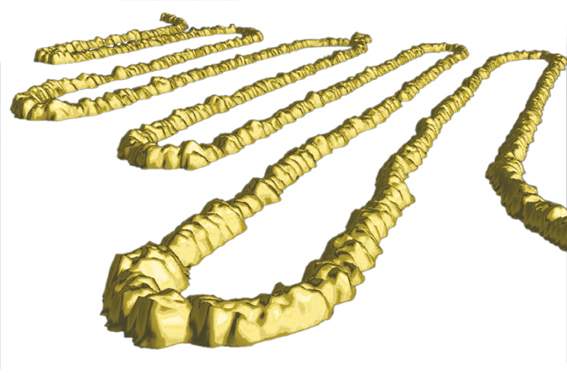Now, the scientists have begun gold-plating these nanotube shapes through a process called electrodeposition. Electrical pulses cause dissolved metal salts to leave the solution and attach to the nanotubes. Lovely as these creations appear, the idea is not to design microscopic jewelry, says Joselevich, but “to combine the unique geometry of the serpentine nanotubes with the properties of other materials.” Any material that is a conductor or semiconductor can be used to make nanowires with this method, which, in their recent publication in
Nano Letters, the researchers called "
drawing with nanotubes.” In addition to gold, they coated serpentine nanotubes with bismuth telluride, a material that has the ability to convert heat to electricity or, conversely, cool when electricity passes through. Nanowires of bismuth telluride could power microscopic devices or function as miniature cooling units for nanoelectronics.
The team is continuing to experiment with creating serpentine nanowires from a variety of materials. A recent effort might be used, for instance, in miniature light collectors or sensors, or even “nano-neon” lights.

